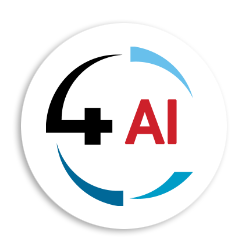Blog - Operational Technologies
Breaking Silos, Unlocking Value: AI, IT and OT Convergence in Industrial Data

AI-driven technology stands as a beacon of hope for industrial organisations grappling with vast amounts of data. Its potential to streamline and enhance data analysis can be transformative in unlocking hidden business value. In today’s industrial landscape, organisations find themselves inundated with an unprecedented volume of data. However, the challenge lies not in its quantity but in crafting a strategy to extract tangible business value from this data trove. Over time, industrial data and systems have been sequestered within organisational silos, impeding the realisation of their true potential. Despite numerous promising endeavours, proofs of concept, and pilot programmes, many digital transformation initiatives stumble when it comes to unlocking the latent value of data on a larger scale. Consider the realm of AI initiatives: Studies by McKinsey highlight that while over 75% of industrial companies have initiated AI pilot programmes, a mere 15% have succeeded in achieving substantial, widespread impact. As the sheer volume and significance of industrial data burgeon, organisations are in dire need of a fresh approach and robust data infrastructure to unify, interconnect, and expand data operations across their facilities.
Enhanced connectivity stands as a linchpin in this context. It’s imperative for organisations to seamlessly link people, machinery, plants, logistics, and applications, enabling improved communication and collaboration through existing data streams. Equally crucial is the implementation of a flexible approach that facilitates corporate-wide information flow, securely integrates data from manufacturing, process control, and IT systems, and adapts and refines it for diverse use cases. The convergence of Information Technology (IT) and Operational Technology (OT) bears substantial significance for industrial businesses and manufacturers. Traditionally seen as distinct domains with minimal overlap, IT governs critical infrastructure for organisational operations, while OT focuses on industrial processes. However, the advent of technologies like the Internet of Things (IoT) and big data analytics is eroding these boundaries, facilitating a closer integration between IT and OT.
Historically siloed, IT and OT have operated with distinct perspectives and separate teams. Yet, fostering a collaborative environment where cross-disciplinary experts converge and gain a holistic view of enterprise-wide data can unlock remarkable synergies. This fusion of knowledge and insights can spark innovative solutions and drive transformative outcomes for businesses. For instance, enterprises engaged in planning and scheduling aspire to align scheduled actions with actual occurrences. Presently, achieving this alignment often entails pulling data from multiple sources, introducing uncertainties. However, consolidating data into a unified source enables companies to discern discrepancies between planned objectives and actual performance, facilitating targeted adjustments and bolstering profitability and sustainability.
Predictive analysis of accumulated data over time enables organisations to anticipate actual output and dynamically adjust plans based on specific demands. Implementing systems that autonomously adapt plans based on these factors leads to a truly self-optimising framework. Leveraging data effectively within industrial organisations poses considerable challenges. Despite amassing copious amounts of data, refinement processes such as error correction, duplicate removal, and gap filling are necessary prerequisites. The data must then be structured into an accessible format. Yet, mere aggregation is insufficient; sophisticated analysis tools and specialised skills are imperative for meaningful interpretation, often necessitating the recruitment of data analysts.
Contextualising data presents the most formidable challenge. While enterprises can aggregate and cleanse data and devise algorithms for accuracy, understanding
the metadata – the contextual information linked to the data - is intricate. The complexity of managing extensive industrial data isn’t solely confined to collection, cleaning, and contextualisation;
it also involves making it easily searchable to discern enterprise-wide trends and patterns. Effectively correlating disparate data points to paint a comprehensive operational picture, like mapping plant activities, poses a complex challenge. Querying this data, especially at scale, demands sophisticated techniques. While fully integrated systems for managing industrial data aren’t yet ubiquitous in business operations, they are anticipated to become standard in the future. The evolution of computing and AI, propelled by the exponential growth of data, suggests an imminent shift in system functionality. Future systems are envisioned to engage in interactive dialogues, empowering operators to explore scenarios, assess probabilities, and gauge their impact on profitability and sustainability. This evolution towards self-optimising plants promises more insightful decision-making, thereby fostering the success of industrial systems worldwide.
In conclusion, at the forefront of this convergence, 4Sight Technologies specialises in bridging the gap between OT and IT data. With a suite of cutting-edge solutions, 4Sight empowers organisations to seamlessly integrate disparate data streams, fostering a collaborative environment where experts converge to gain holistic insights.
4Sight’s expertise lies in consolidating and refining data, facilitating its contextualisation and transforming it into actionable insights. By bridging the gap between IT and OT, 4Sight enables organisations to navigate the complexities of data analysis effectively.

Contact Details
Wilhelm Swart | Chief OT Officer - This email address is being protected from spambots. You need JavaScript enabled to view it.

